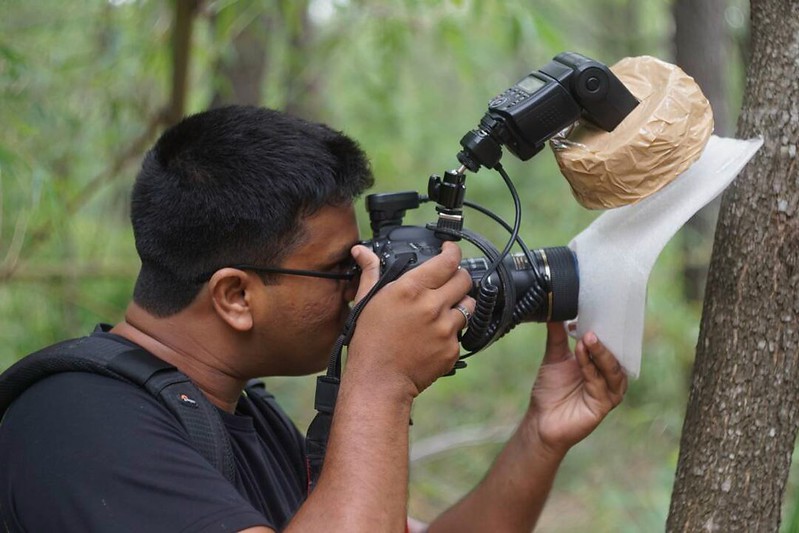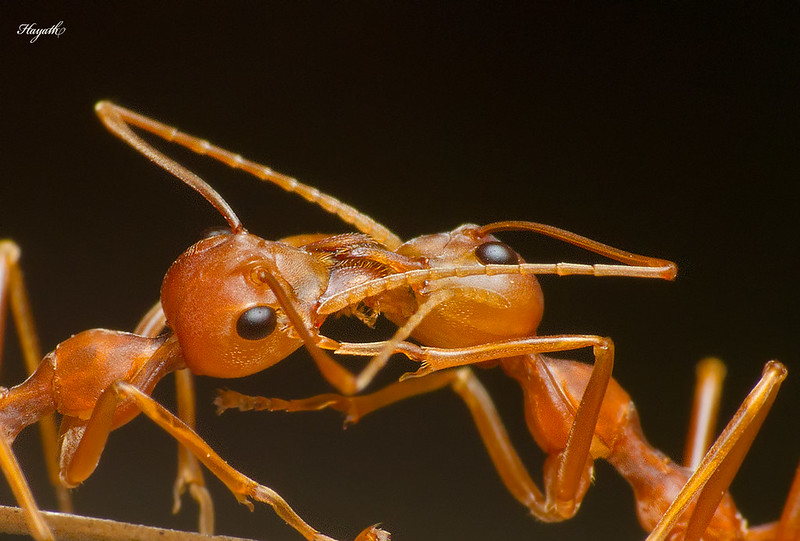Real macro and the fascination of the small world begins at 1:1 and beyond. Various problems arise. The inverse square law governs most of optical physics and becomes evident in high magnification macro. Two things to be considered -
1. Change in effective aperture. This translates to lesser light reaching the sensor. Read more on effective aperture here -
https://www.cambridgeincolour.com/forums/thread1358.htm
2. Greater DoF fall-off. Of course, dialling down the aperture to larger f-stop would help in getting a thicker DoF slab, but diffraction sets in pretty quick and becomes counterproductive in achieving image sharpness.
In both cases a smaller aperture meant the need for larger amount of light. This meant either
1. Bump up ISO and balance with lowering shutter speed. This needs a camera body that can perform at higher ISO and produce clean images, else sticking to lower ISO will mean reduced shutter speed (and lower shutter speed = more camera shake/movement of the subject due to wind)
2. Use artificial lighting
I chose to focus on the latter given that it also helped me with freezing motion and providing better micro contrast. This brought in a different set of challenges (Like the saying goes - There's a devil for every level) - blown out highlights and lost detail.
Here's the setup with a lot of trial and research, have taken inspiration from a lot of folks who've been kind enough to share their lighting setup

I used a C-bracket with a small ballhead to bring the flash as close to the front element as possible (thanks to the inverse square law that quadruples the amount of light when the distance is halved). Layers of diffusion (packing foam sandwiched between tracing paper) were added to reduce the harshness of light.
As with all contraptions - the "effective" lighting zone is limited close to the lens' front element, works best at magnification ranges closer to or greater than 1:1
Based on the amount of lighting I also make use of Flash exposure compensation (FEC) to get the right amount of light on the subject.
Some examples of lighting






Hoping this was helpful in some form.
Cheers!
Hayath
1. Change in effective aperture. This translates to lesser light reaching the sensor. Read more on effective aperture here -
https://www.cambridgeincolour.com/forums/thread1358.htm
2. Greater DoF fall-off. Of course, dialling down the aperture to larger f-stop would help in getting a thicker DoF slab, but diffraction sets in pretty quick and becomes counterproductive in achieving image sharpness.
In both cases a smaller aperture meant the need for larger amount of light. This meant either
1. Bump up ISO and balance with lowering shutter speed. This needs a camera body that can perform at higher ISO and produce clean images, else sticking to lower ISO will mean reduced shutter speed (and lower shutter speed = more camera shake/movement of the subject due to wind)
2. Use artificial lighting
I chose to focus on the latter given that it also helped me with freezing motion and providing better micro contrast. This brought in a different set of challenges (Like the saying goes - There's a devil for every level) - blown out highlights and lost detail.
Here's the setup with a lot of trial and research, have taken inspiration from a lot of folks who've been kind enough to share their lighting setup

I used a C-bracket with a small ballhead to bring the flash as close to the front element as possible (thanks to the inverse square law that quadruples the amount of light when the distance is halved). Layers of diffusion (packing foam sandwiched between tracing paper) were added to reduce the harshness of light.
As with all contraptions - the "effective" lighting zone is limited close to the lens' front element, works best at magnification ranges closer to or greater than 1:1
Based on the amount of lighting I also make use of Flash exposure compensation (FEC) to get the right amount of light on the subject.
Some examples of lighting






Hoping this was helpful in some form.
Cheers!
Hayath